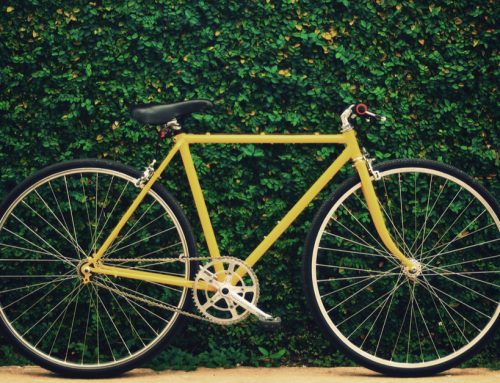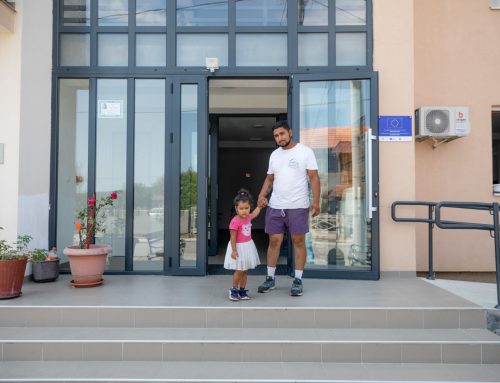“European funding changed our lives here in BioSense. We now have 50 young people, 30 out of which have PhD degrees, who would otherwise all be abroad if it weren’t for EU funding.” This is how Professor Vesna Crnojevic-Bengin, President of the BioSense University in Novi Sad, describes the impact EU projects had on this institution.
The Institute, located in a modern central building of the University of Novi Sad, hires 68 researchers striving to introduce advanced informational technologies in agriculture, food safety, ecology, environmental protection and forestry. It kicked off in 2006 as BioSense Centre, founded by “a group of researchers, enthusiastic scientists at the Faculty of Technical Sciences – electronic engineers and telecommunications experts. In the beginning, there were only three of us; this was one among many organisational units of the Faculty. We reckoned that the knowledge we had could be put to community use and, naturally, since we were in Vojvodina, we focused on the application of our knowledge on agriculture,” says Professor Crnojevic-Bengin.
To date, through European Union projects BioSenses has received more than 10 million euros in grants and became an internationally recognised institute and by far the most successful Serbian participant in the FP7 Programme, with as many as 14 implemented projects. Its President describes this journey through “three quantum leaps.”
The first EU project – “Agrosens: Precise Agriculture” has at the same time been the first Serbian project to take part in FP7 Programme (Seventh Framework Programme for Research and Development), was the first quantum leap. The project worth million euros, equipment, staff and networking and dissemination each received a third of the money. According to Crnojevic-Bengin, networking has been extremely important, so as a result of the first project and the networking within it, all of the other EU projects followed.
“We have received equipment, our returnees from abroad came to work with us, whereas our experts travelled abroad and we have suddenly realised the benefits brought by European approach to researching and their attitude toward science, because research is both individual and group process.” As one of the important things, she mentions the support shown by the University and Provincial authorities.
The second “quantum leap” has also been made thanks to EU donation, also via FP7 Programme: through the Inosense project, in 2013 they received three million euros to strengthen the centre. These funds were used for laboratories, unique in the region and some even in Europe, covering six scientific areas – nano technology, microelectronics, remote detection and GIS systems, mechatronics, robotics… hiring 60 people, fully pursuing the main idea behind the Centre: to apply IT in agriculture. BioSens thus acts as a synergy, developing two sectors, rated by some as the sectors with the most potential in Serbia: IT and agriculture. Through researches focused on precise agriculture, but also through a specially designed programme of agriculture scientific results transfer, BioSense supports the development of sustainable agriculture.

Micro and nanoelectroncis laboratory – LTCC
Within the Smart Dust project, the department for micro and nanotechnology, scientist are working on sensors that would be “so small and cheap that would be disposable”, measuring and sending data on the condition of crops – each yard of the land, conditions, sowing capacity…
“Main problem in agriculture is the variability of the land and there is always a need to combine several technologies in order to draw the maximum use. In order to obtain information and tell farmers what to do to make more money, you have to play opportunistically so as to find out the data on the crop itself. Such a system will equip the State with a tool to know at any time crops everywhere, predict the yield, but also the price of certain crops. On the other hand, the agriculture is becoming growingly interesting to young people, they are now farmers with tablets, who require targeted results and make more yield,” says Professor Crnojevic-Bengin.
This way, agriculture becomes technologically “literate” and this multidisciplinary approach might increase its efficiency up to 30 per cent, she says.
BioSens also founded the first Living Laboratory for precise agriculture (and the first living laboratory of any kind in Serbia for that matter) including relevant domestic SMEs, companies, farmers, decision makers and other beneficiaries, with the aim to focus BioSense research to meet their specific needs. Through EU project Fractals, BioSens allowed 13 Serbian SMEs to receive grants worth 1,7 million euros, for the development of innovative products applying “Internet of the future” in agriculture.
As a result of successful EU projects, in April 2015, the Centre became Institute – this was the third quantum leap: in the competition of nearly 200 scientific institutions from across Europe, BioSense Institute won ANTARES project during the most prestigious European Teaming call for proposals within Horizon 2020. The project foresees the investment of 28 million euros to allow the Institute to evolve to European Centre of Excellence – focal point of research in the region and one of the leading European scientific institutions which would contribute to swifter economic growth of the country. A total of nine centres is foreseen, with BioSense being the only non-EU institution.
“Within the project we have to prove ourselves as an independent institution; this was the signal that made the State rename the Centre into an institution. We have won the phase 1, which comprises 500,000 euros to develop a business plan for the centre of excellence which will include investments, but also results, given that the main goal is to speed up the development of a certain part of Europe through science,” says Professor Crnojevic-Bengin.
The phase 2 now await BioSense, where European Commission makes the decision whether it would become European centre of excellence. During said phase, the Commission insists on the cooperation with national institutions: out of 28 million euros, half will be secured by the Commission, while 14 million should be secured by the State through European Investment Bank loan.
“EU funding should create jobs for another 100 researchers. Researches conducted at the Institute are valuable to European agriculture as well. We are optimistic about this,” says Institute President. The decision, likely to be another quantum leap for BioSense, but for Serbia as well, is expected to made in late 2016.




